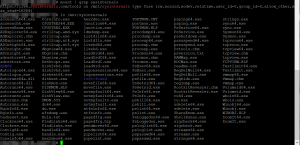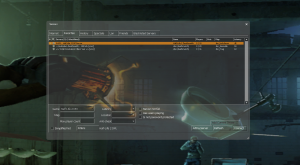If you want to create a customised password list for a specific target (client, I hope), this article is for you. It’s basically just a re-write of “https://karimlalji.wordpress.com/2018/04/26/password-guessing-mangle-a-custom-wordlist-with-cewl-and-hashcat/” which I’ll probably forget later so I’m documenting here. We don’t just want a list of passwords, we want a list of
Read moreGet help with Redhat Enterprise Linux, Fedora and CentOS Linux Distributions. AGIX staff have the know-how and experience to help your organisation with best-practices, current technology in various Cloud environments including Amazon AWS.
AGIX is a Redhat Partner. We study, sell and support Redhat Enterprise Linux.
This page shows examples of our work that AGIX shares freely with you. For a fully supported compute environment, contact our team to find out how we can help your organization move forward in the right way.

Contact our friendly team to get started.

Mount SysInternals over HTTP on Linux
This article demonstrates how to mount “https://live.sysinternals.com/tools” on Linux so that it’s accessible at “/mnt/sysinternals”, for example. On CentOS: yum install davfs2 On Ubuntu: apt install davfs2 Mount it: mount -t davfs https://live.sysinternals.com/tools /mnt/sysinternals Now you can access it at: # ls /mnt/sysinternals/ accesschk64.exe diskext.exe pipelist.exe RegDelNull.exe accesschk.exe Diskmon.exe PORTMON.CNT
Read moreUpgrade MariaDB to 10.3 on CentOS 7
Everything you see here is found more formally at “https://mariadb.com/docs/operations/upgrades/upgrade-community-server-cs103-centos7/”. This page is basically just my notes in case I can’t find the other site when I need it in future. We’re using CentOS 7 and upgrading from “MariaDB 5.5” to “MariaDB 10.3”. Backup your DB and config files first.
Read morePen Testing Tools – Stuff we all need
This article is mostly a cheat sheet for things pen-testers need. Obviously there’s a little picking and choosing depending on the need. Nmap: Ubuntu: apt install nmap CentOS: yum install nmap Nikto: Ubuntu: apt install nikto CentOS: yum install nikto Mimikatz: https://sourceforge.net/projects/mimikatz.mirror/files/latest/download Hydra: Ubuntu: apt install hydra Cewl: Ubuntu: apt
Read moreConfigure Metasploit with NMap and the Database – Advanced
This article walks you through the process of installing, configuring and running scans using Metasploit and Nmap. Both CentOS 7 and Ubuntu 20.04 are discussed. Our objective is to be able to run nmap scans and have the results go into a database so we can filter the results later
Read more
Create Your Own Public Half-Life 2 DM Server on CentOS 7/8
This article walks you through the process of building your own publicly accessible Half-Life 2 Death Match server on CentOS 7 and should work with 8 too but that’s untested. There’s plenty that can go wrong in this process. See the bottom of this article for common problems and solutions.
Read more
Fail2Ban with MySQL Database for IP Blacklisting
This article demonstrates how to configure Fail2Ban to use a MySQL (or MariaDB, etc) as the storage repository for IP blocking records. This allow multiple Fail2Ban services (running on multiple servers) to report and use a central IP blocking repository. A little context. In this article, we’re installing everything on
Read more
GeoBlocking with Apache on CentOS and Ubuntu
This article describes how to protect your Apache web server by restricting which countries can access it. We’re using Apache on CentOS 7 but Ubuntu instructions are included and are very similar. I’ve given two examples; one on whitelisting everything except what we want to block, and blacklisting everything except
Read more
FreeRADIUS – Certificate Has Expired – Solution
This article explains how to solve the issue of FreeRADIUS certificates expiring. In this example, we’re using CentOS 7 but the same should work on any Linux provided the paths are the same. The following commend errors due to a certificate expiring. systemctl restart freeradius SO we need to re-generate
Read more
Create Your Own Private Git Repo On Your Servers
Your Git repo doesn’t need to be on Bitbucket or Github. You can very easily host a repository on your own systems. This article demonstrates this. We’re using CentOS here but any Linux OS should work. You just need the “git” package. As always, we’d love to read your comments.
Read more